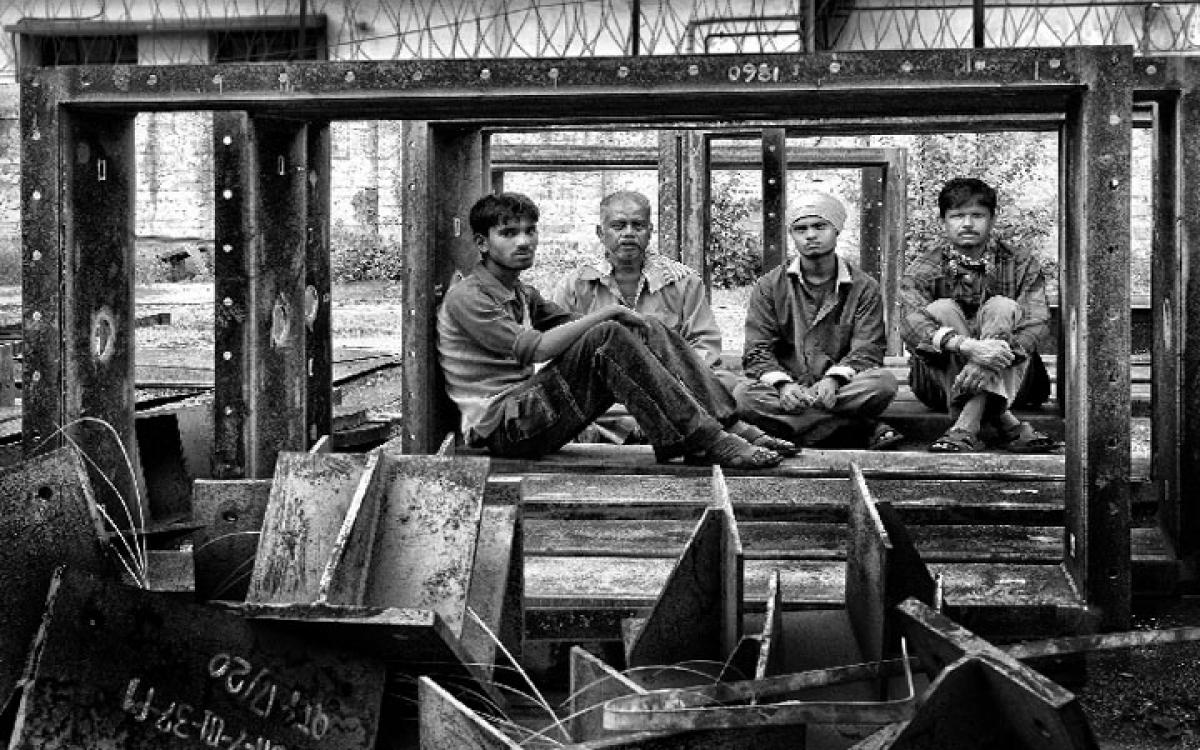Live
- NASA Tracks Five Giant Asteroids on Close Approach to Earth Today
- Pushpa 2 Hits ₹1000 Crore in 6 Days: How It Compares to Other Top Indian Films
- Vivo X200 and X200 Pro Launched in India: Price, Specifications, and Features
- Nitin Gadkari Admits Feeling Embarrassed at Global Summits Over Rising Road Accidents in India
- Opposition Slams ‘One Nation, One Election’ Bill as Anti-Democratic; BJP Allies Support the Move
- Celebrate Karthigai Maha Deepam Virtually with Sri Mandir’s LIVE Darshan Experience
- BJP Extends Support to Samagra Shiksha Abhiyan Employees' Strike, Demands Immediate Regularization and Welfare Benefits
- Dr. M. Priyanka Stresses Quality Education, Nutritious Meals, and Cleanliness in Schools
- Mandal Level CM Cup Sports Concludes in Ija with Promising Talent and Enthusiastic Participation
- Harish Rao Slams Revanth Reddy: "More Talk, Less Action"
Just In

India is regarded a low-cost manufacturing hub for industries ranging from autos to textiles. Protection for workers is lax and legislation poorly implemented. Millions of workers contend with archaic labour laws and are confined to the so-called informal sector, with poor training and few benefits in businesses that often flout laws concerning safety or the employment of underage workers.
India is regarded a low-cost manufacturing hub for industries ranging from autos to textiles. Protection for workers is lax and legislation poorly implemented. Millions of workers contend with archaic labour laws and are confined to the so-called informal sector, with poor training and few benefits in businesses that often flout laws concerning safety or the employment of underage workers.
Mumbai: Efforts by the Indian government to boost manufacturing and encourage startups may put vulnerable workers at greater risk, activists say, amid pressure from investors to smooth the path of doing business. The "Make in India" week which kicked off on February 13 is aimed at luring greater investment to increase output and create more jobs in industries including electronics manufacture and textiles and apparel.
A separate effort to boost startups exempts them from some inspections and taxes for at least three years. "There's already a lot of pressure to amend existing laws to make it easier to fire workers or prevent them from unionising," said Gayatri Singh, a co-founder of the Human Rights Law Network in Mumbai. "It's dangerous to exempt businesses even more. There are large numbers of child workers and bonded labourers; without checks and balances, we won't know what's going on."
India is regarded a low-cost manufacturing hub for industries ranging from autos to textiles. Protection for workers is lax and legislation poorly implemented. Millions of workers contend with archaic labour laws and are confined to the so-called informal sector, with poor training and few benefits in businesses that often flout laws concerning safety or the employment of underage workers.
There are 5.7 million child workers in India between the ages of five and 17, out of 168 million globally, according to the International Labour Organization. More than a quarter of them work in manufacturing, confined to poorly lit, barely ventilated rooms embroidering clothes, weaving carpets or making matchsticks.
Even adult workers are not protected. Almost half the world's enslaved workers, or about 16 million, are in India, many working in poorly regulated industries such as brick kilns or small textile units.
In the automotive industry, which has drawn large global brands including Honda Motor and Suzuki Motor, more than 1,000 workers, most below 23 years of age, are injured seriously in the automotive hub of Gurgaon and Manesar in northern India alone every year, according to a report by non-profit organisations Agrasar and Safe in India.
"Most enterprises remain in the informal sector for fear of compliance with the laws and this is bad for labour because they get no benefits," said Prashant Narang, an advocate at the Centre for Civil Society in New Delhi. "The policy should be to simplify labour laws and promote formalisation of the economy."
Prime Minister Narendra Modi's government has focused on efforts to draw more foreign investment and make it easier for businesses to set up shop. India ranked 130 of 189 countries on the World Bank's Ease of Doing Business index from last year, well behind its peers including Brazil, China and Russia. Meanwhile, activists and labour unions have long called for a higher minimum wage, better working conditions and more training for workers.
"Using people as a mere physical resource to reach the goal of becoming a manufacturing giant is no way for the country to progress," said Prerit Rana, a co-founder of Delhi-based non-profit organisation Agrasar, that helps rehabilitate injured workers. "We need a better manufacturing model."
(Thomson Reuters Foundation)
Rina Chandran

© 2024 Hyderabad Media House Limited/The Hans India. All rights reserved. Powered by hocalwire.com







